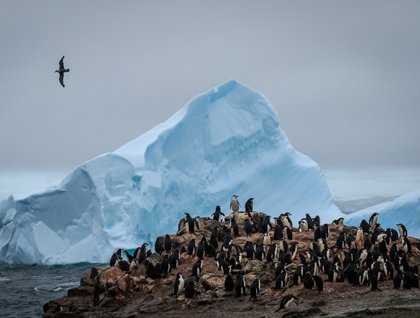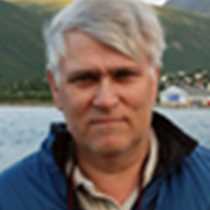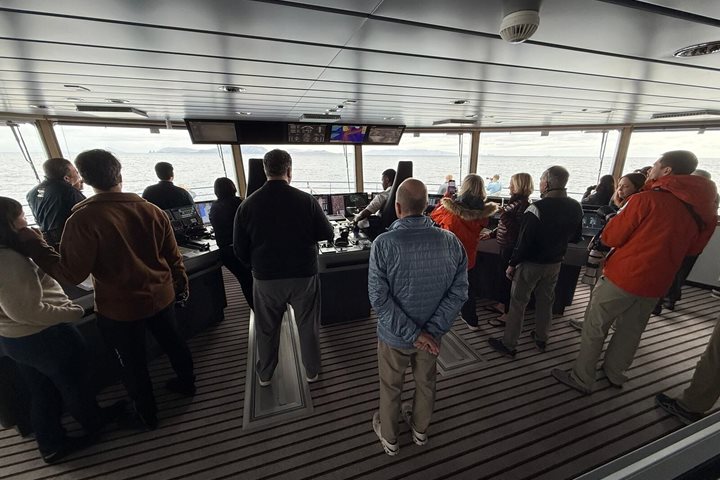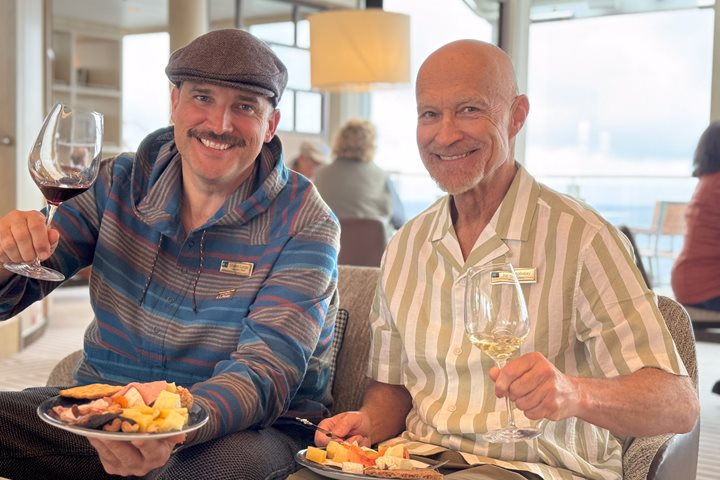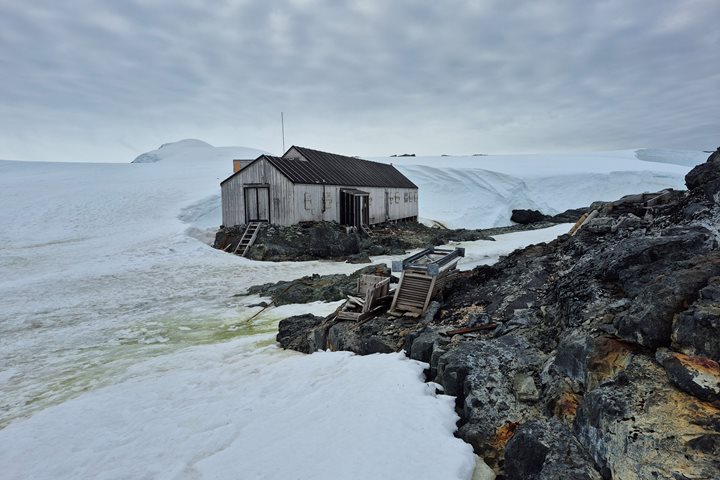Finally, after a long haul of several days traveling from many different destinations all over the world, many of us gathered up on the bridge before breakfast to catch the very first sight of Antarctica—a place we have been desiring to reach.
Mainland Antarctica was first spotted by the Russian expedition in 1820, by Bellingshausen from his ship Mir, although the navigator of all navigators, James Cook captaining his ship, the Resolution 1872 – 75, tried to confirm the persistent idea that an exciting southern continent existed, Tierra Australis. He tried twice during this voyage as he was sailing through the Southern Ocean, to push south, being the first ever to cross the Antarctic Circle in 1773. He reached dense sea ice pack and was forced to turn north, never having seen land and wrote: “if land exist further south it will be covered with ice and for no use to the ever growing Empire.”
During our approach towards some outlying islands off the peninsula, the South Shetlands, we sighted from the bridge large icebergs, penguins, Antarctic fur seals, and some distant whale blows. We had now crossed the infamous Drake Passage in the most remarkably calm conditions with record speed! Soon we entered the English Strait and escaped the Southern Ocean, although very gentle to us during the crossing, we came into the protection of the group of islands named in 1819 by their discoverer William Smith. These islands are located north and northwest of the Antarctic Peninsula, but way south of the biological definition of Antarctica, the Convergence, and the political definition of Antarctica, latitude S 60o.
After some tricky navigation through the strait and the wind direction forced a reposition to the less windy side, everybody was ready to line up for our first outing. Soon our fleet of Zodiac boats were shuttling eager guests ashore to put their feet on solid ground where penguins and a few elephant seals were there to greet us. The weather was as usual for an ‘Antarctic greeting’ in the Shetlands in the latter part of summer grey, gusting wind, some rain, and very low clouds. Would this stop any hardy ‘explorer’ ready to meet his or her first Antarctic encounter? Of course not!
We are prepared for any conditions, and on shore we saw elephant seals molting, a few fur seals, and of course our first penguin colonies in full activity, breeding—gentoo and chinstrap, all mainly with chicks. The ever-patrolling skuas are now having heydays dragging away penguin chicks to dispatch and feed their own young.
Sailing in the polar regions is always about making plans but also being very flexible. Our afternoon plan was Hannah Point on Livingstone Island, but as the wind increased our expedition leader and captain came up with Plan B—escape further east into what is known as ‘Iceberg Alley,’ or in fact Antarctic Sound. Its name dates back to Otto Nordenskjöld’s expedition 1901-04, as his ship was named Antarctic, the very first to ever sail through this body of water in January 1902 to take them to the Weddell Sea.
Large tabular icebergs drifting out from the Weddell Sea, with its clockwise gyre, some are driven into the sound and as they reach more shallow water, usually less than 200 meters deep, they get grounded. We spent the afternoon in hazy and mystical conditions, cruising between these enormous monsters.
The descriptive name, tabular iceberg, derives from ice shelves along coastal Antarctica, and some may come from the major ice shelves in the Weddell Sea—Larsen, Filcher, or Ronne Ice Shelves. Still some of these impressive tabular icebergs can originate from the Ross Ice Shelf and have sailed from the other side of Antarctica driven by a prevailing easterly running coastal current around the continent. As you see these enormous icebergs, you realize the magnitude and force in nature.
Sea ice conditions to the east of Antarctic Sound prevented us from continuing into the Erebus and Terror Gulf, and instead we turned around and our heading was set for the western side of the Antarctic Peninsula where we will continue our exploration. The day was finished with the captain’s welcome cocktail and dinner, and soon after everybody was sound asleep eagerly dreaming about their first Antarctic encounter.

